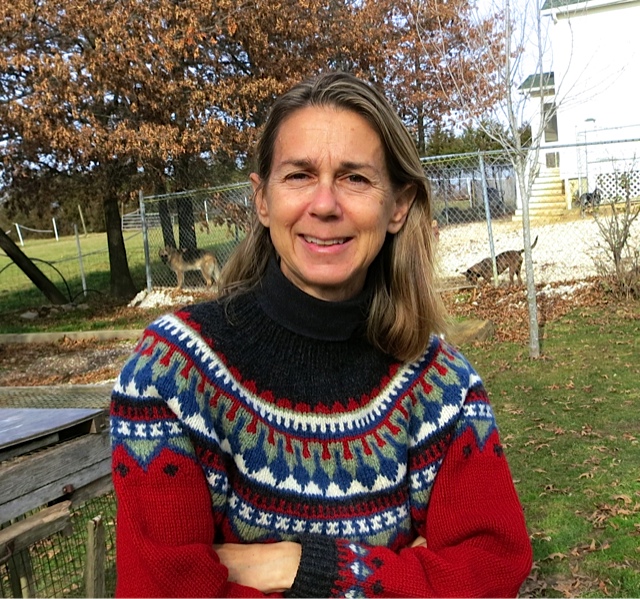
I would like for people to put me out of business by spaying or neutering their pets! I want to make a difference — getting animals adopted and getting people to adopt from shelters.
1. What led you to the mission of owning and operating an animal sanctuary?
I am a dog lover – and I don’t mean that in a mild sense. That was my passion from the time I 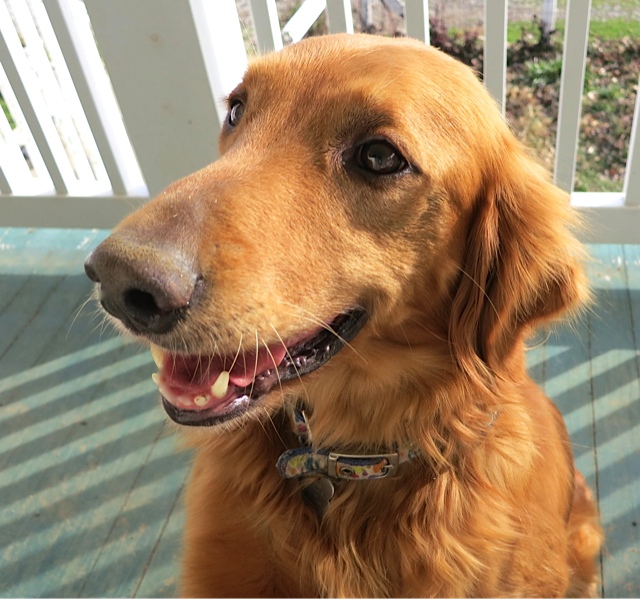 was eight or nine years old. I think for me it was that animals give absolute unfettered love. This was something that I really wanted. Animals are a positive way of giving love and receiving love. That was something that I was seeking as a child. Animals gave me this love.
was eight or nine years old. I think for me it was that animals give absolute unfettered love. This was something that I really wanted. Animals are a positive way of giving love and receiving love. That was something that I was seeking as a child. Animals gave me this love.
To see that animals were unwanted just broke my heart. And so I was that “crazy” person who just wanted to help every animal that I saw. Even as a child I would walk home from school and give out treats to dogs on the end of chains. Where I lived, there were a lot of dogs like that. I would visit them on the way home and then go the next day and they would visit with me. There would be dogs that were afraid of me and then I’d get them to the point where they were happy to see me. That gave me a lot of joy.
Later in life when I got out of college, I ended up working in an animal shelter. It was a high kill shelter. There was a balance going on. I really wanted to make a difference — getting animals adopted and getting people to adopt from shelters and spreading that message. Then there was the other side where you had all these people bringing in animals that they didn’t want and they didn’t care what happened to them.
Ultimately the animals were killed because there were not enough homes for them. My office overlooked the entrance and exit – the same 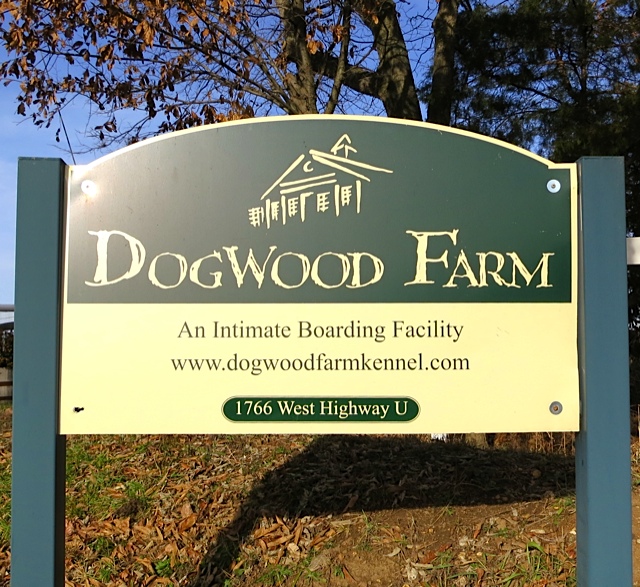 door. I saw which animals came in and didn’t go out. I was there for four years and it really broke my heart on so many levels. At that point I thought, “We can’t help them all.” There’s that big message that everyone in rescue says, “You cannot help them all but you can make a difference in the lives of the ones that cross your path.” That was my personal mission that I wouldn’t be in a position that I would have to take an animal to a shelter. I knew what happened in shelters. I didn’t want to put them back in the cycle. That’s my philosophy and that of this sanctuary.
door. I saw which animals came in and didn’t go out. I was there for four years and it really broke my heart on so many levels. At that point I thought, “We can’t help them all.” There’s that big message that everyone in rescue says, “You cannot help them all but you can make a difference in the lives of the ones that cross your path.” That was my personal mission that I wouldn’t be in a position that I would have to take an animal to a shelter. I knew what happened in shelters. I didn’t want to put them back in the cycle. That’s my philosophy and that of this sanctuary.
We don’t just adopt animals to put them back in the cycle. We are not an adoption agency. We have a lot of animals that are adopted, but we also have a lot of animals that are not adoptable. We consider them all on equal footing. For instance an animal might come in that isn’t very adoptable – the wrong color or the wrong breed.
There are statistics on which animals get adopted and which ones don’t. A black, large, ugly dog may not get adopted. It’s just 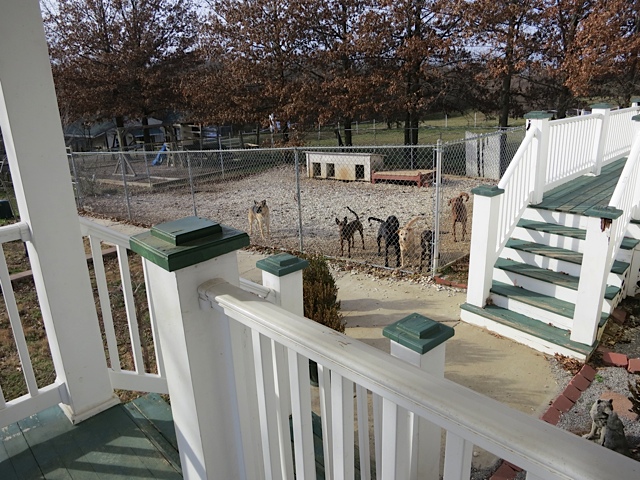 statistically true. We’ve had dogs that don’t get adopted. They are adoptable. For instance, Abby, a big dog, German shepherd pit bull mix, had some behavior issues and was a little bit dog aggressive. This sixty-pound, big, female thirteen-year-old dog with no discernable breed did not get adopted. She came as a puppy. We tried and tried and tried to get her adopted. We had other puppies at the same time and they all got adopted because they were all blond.
statistically true. We’ve had dogs that don’t get adopted. They are adoptable. For instance, Abby, a big dog, German shepherd pit bull mix, had some behavior issues and was a little bit dog aggressive. This sixty-pound, big, female thirteen-year-old dog with no discernable breed did not get adopted. She came as a puppy. We tried and tried and tried to get her adopted. We had other puppies at the same time and they all got adopted because they were all blond.
There is a point at which we knew her only home is here and that it would be more harmful for her to get adopted because she would never really get in synch with where she was. This has been a good place for her.
2. What does this mission mean to you?
I couldn’t not do it. That’s the thing. Just last week I picked up an old beagle. You might say, “What are the options for that dog?” There are none. I could take him to an animal shelter. I could take him to my veterinarian and he could put the dog to sleep. Really there is no other option than staying with me. I have to have a place to take them. That’s how my business evolved. What do you do with these animals that nobody wants? How do you help?
I’m just one person. I wish there were a hundred million people who would do what I do – and then we wouldn’t have the problem. It’s a  constant decision making process. People ask me constantly to take an animal and at first I had a hard time saying, “No.” Every time somebody told me a story I was like, “Oh. I’ll help.” Then I realized I could get in too far and couldn’t help if I didn’t take care of myself. You can’t help if you don’t have the right environment for the animals. I got to the point where I had to take a giant step back and say, “Wait a minute. This is not a condition for me and it’s not a good condition for the animals.”
constant decision making process. People ask me constantly to take an animal and at first I had a hard time saying, “No.” Every time somebody told me a story I was like, “Oh. I’ll help.” Then I realized I could get in too far and couldn’t help if I didn’t take care of myself. You can’t help if you don’t have the right environment for the animals. I got to the point where I had to take a giant step back and say, “Wait a minute. This is not a condition for me and it’s not a good condition for the animals.”
3. What was your best day owning and operating an animal sanctuary?
It was before I even started the sanctuary. I thought, “Things could not get any better.” I had found a little female shepherd mix dog. She had milk. I took her to the vet and he figured she had puppies. I was doing rescue work in St. Louis city, had been watching her come and go, and thought there were puppies underneath this lean-to. She had made a nest under there. I thought I would first get her and then her puppies.
I got her even though it was very hard because she was very shy. I went to look for the puppies  and they weren’t there. I looked and looked and looked for the puppies and I couldn’t find them. This was a very bad neighborhood with a lot of abandoned houses. It wasn’t real safe for me to be walking and poking around. I would drive around and kept going back to this one section.
and they weren’t there. I looked and looked and looked for the puppies and I couldn’t find them. This was a very bad neighborhood with a lot of abandoned houses. It wasn’t real safe for me to be walking and poking around. I would drive around and kept going back to this one section.
One time I had the radio off and was sitting in the alley two doors down from where I had found her. Then I heard little puppy cries. I pulled over in the alley and wondered where that sound was coming from. I walked around and found an abandoned building – a big brick four family flat. I followed the puppy cries. I found them! They were in a well and down four or five steps near a back basement door. They were OK and were three or four weeks old. They were moving around, but they couldn’t get up the steps. I was by myself in this cruel, cruel world kind of neighborhood, in the winter, the grayest, nastiest day, in a depressed area, and everything about this situation was so sad. But in the middle of all this I found these puppies alive. I called someone and said, “They’re alive! They’re alive!” They were probably thinking, “OK?” But for me I was so happy because I could not believe I finally found these puppies.
4. What was your worst day owning and operating an animal sanctuary?
Those happen all the time. We lost two dogs – I mean that the dogs died last weekend. One of them died and there didn’t seem to be anything wrong with him. He ate his dinner. Two hours later he was dead. We don’t know exactly how old he was, but we guessed around nine or ten. With dogs you never know until sometimes it is at the end. The fact that he ate his dinner made us think he was OK. Most dogs that aren’t feeling well don’t eat. That’s our sign. If a dog isn’t eating we immediately take it to the vet.
Then the next night, one of our dogs didn’t eat her dinner. My husband said, “That’s strange  because she usually comes right over and eats.” He went over and lifted up her lips and her gums were pale. He called me and told me, “Lila’s looking shocky. I don’t know what’s going on. She was fine yesterday. She was running around. Now she’s not feeling well and won’t even look at her dinner.”
because she usually comes right over and eats.” He went over and lifted up her lips and her gums were pale. He called me and told me, “Lila’s looking shocky. I don’t know what’s going on. She was fine yesterday. She was running around. Now she’s not feeling well and won’t even look at her dinner.”
We had no idea. My husband took her to the university clinic. They did an ultrasound and blood work. They said everything pointed to cancer. They gave her oxygen. They told us they could try to give her steroids or a blood transfusion, but in the end she is not going to be able to go home. That didn’t sound like a very good prognosis. We were shocked. She was only six years old.
We had no idea. She was an active dog. She had another dog that she lived with and she had been running around. I told my son, “Where there’s life there’s death.” We have the absolute honor to have all this life around us and all these faces and stories. The down side is that they are probably going to die before we do and it’s sad. Yet we can go on and we’ll help another dog. Another dog will have a nice life with us.
I used to take it much harder. You do develop an internal coping mechanism. You just think, “It’s not such a bad thing. They had a good life. People who cared for them, loved them, and took care of them surrounded them. That’s no so bad!”
Another one of my very worst days was when I lost one of my horses. It was similar to the dogs dying. It was sudden. He was an older horse,  but he had so much heart. He was so wonderful! When you lose a horse, it’s not like losing a dog. You don’t just go to the vet and they put them to sleep and take care of things. You have to be on the phone to the backhoe driver and the vet. While you are on the phone with the vet, you have to figure out how to coordinate everything. You become a funeral director while being your horse’s friend and having to make a decision when to tell the backhoe driver to come and prepare a place for your friend after he dies.
but he had so much heart. He was so wonderful! When you lose a horse, it’s not like losing a dog. You don’t just go to the vet and they put them to sleep and take care of things. You have to be on the phone to the backhoe driver and the vet. While you are on the phone with the vet, you have to figure out how to coordinate everything. You become a funeral director while being your horse’s friend and having to make a decision when to tell the backhoe driver to come and prepare a place for your friend after he dies.
That is the worst day. That was probably the most emotionally draining worst day trying to figure out the diagnosis – what’s wrong with this horse and what should I do? We never did figure out what was wrong — other than his body was shutting down. With horses you can treat all the symptoms, but you can’t stop the process. That’s hard in a world where we like black and white solutions or turn on, turn off experiences.
My vet was certainly willing to do whatever I was willing to do. We were giving this horse IV’s and all this stuff. I was in the stall with him. He was having a hard time standing up. My worst fear was that he was going to fall and break his neck. What a horrible way to exit the world.
There was a real danger that he could fall and fall on me – twelve hundred pounds on a hundred pound person – that’s not pretty. But he had so much heart. He was holding himself and not falling into me at all. He was so aware of my presence. He was going from side to side. He was not going to hurt me. That’s the kind of horse he was. I was his person. There was nothing he would do to hurt me.
When I rode him, he was a Cadillac. We had this relationship. When I was standing there with him, I was thinking about that relationship and what that meant. I wondered, “Is it time?” I had just gotten off the phone with the vet and we were going to do another twenty-four hours of fluids, but I just felt, “No. This is his time. He’s telling me, ‘This is it’.”
There’s another component to that. He had a horse friend. Horses bond so absolutely. This 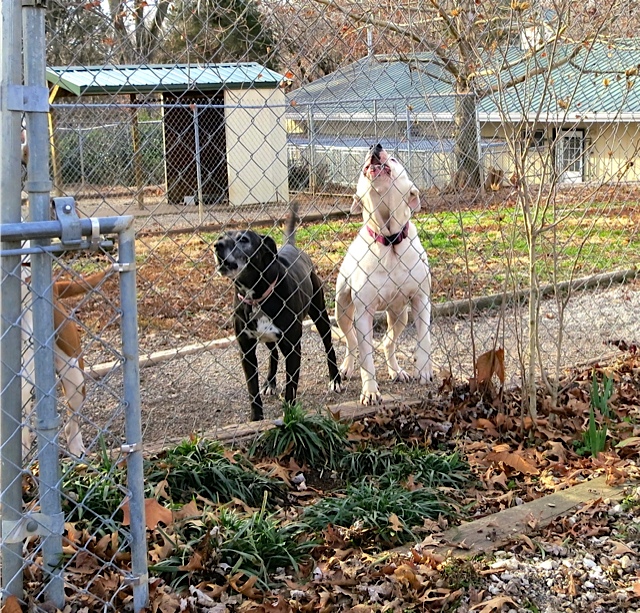 was his best friend in the whole world. She stayed with him outside his stall. She would stand with him while he was sick and he would lean on her like a T. He would stand next to her and go back and forth. She was his support. I cried for three or four days from seeing those two together and knowing how awful it would be if he were no longer with her. I was thinking of her relationship. I was thinking of our relationship. I was thinking about the whole dynamic of the herd because horses are very much interrelated in a herd. This was not only the worst day, but also the worst week – just trying to sort through that. There was nothing we could do. He was ready to go and I was the only thing stopping him from not suffering.
was his best friend in the whole world. She stayed with him outside his stall. She would stand with him while he was sick and he would lean on her like a T. He would stand next to her and go back and forth. She was his support. I cried for three or four days from seeing those two together and knowing how awful it would be if he were no longer with her. I was thinking of her relationship. I was thinking of our relationship. I was thinking about the whole dynamic of the herd because horses are very much interrelated in a herd. This was not only the worst day, but also the worst week – just trying to sort through that. There was nothing we could do. He was ready to go and I was the only thing stopping him from not suffering.
I called the vet back and said, “No. I’m not going to do this.” I decided not to continue the IV’s and treatment. He said, “Good. OK.” Vets are in such a bad position because no matter what they say, you are going to be studying it for the next couple of years – asking yourself whether you did the right thing.
5. How did you survive your worst day?
I have a really good support team. I respect them and they respect what I’m doing. I have the obligation to take care of the animals that I have. I will always have others in the wings waiting to come forward. That’s the thing – the next day we still had horses to feed and things to do. The loss of an animal opens up another opportunity to help other animals. There’s always plenty to do. Maybe that’s part of why I do this work – it keeps me on to the next subject. You don’t dwell on your own personal issues. You don’t dwell on one particular situation too hard because you have other needs. That’s really good for me. That’s how I work. Where’s there life there is death. You have to take one with the other.
The one thing I would like to say is to put me out of business by spaying or neutering your pets. This is a problem of unwanted animals. It’s epidemic. It says so much about people. It’s a people problem – it’s not an animal problem. The question every rescue worker struggles with is how to deal with these people. How do you do it in a compassionate way? But at the same time knowing that they are the problem.
That is the toughest thing to get beyond. There are always going to be people that I disagree with when it comes to animals. It is such a passion and motivation to me. It’s like politics. For instance, someone might say, “I want a golden retriever.” You know that you can’t convince them that a dog is going to be a dog – no matter what color or kind he is.
The hardest thing I have to reconcile is to ask when to pull back and know I am going to disagree and dislike people on so many levels – like not liking people who dump their dogs or buy dogs from a breeder. That’s a hard thing on a day in, day out basis – to reconcile that love for mankind. For instance, sometimes I answer the phone and hear someone say, “I have this dog.” Sometimes I have to put the responsibility back on them. For instance a person will call and say, “I’ve got two dogs and I only want one.” I have to say, “Well, I’ve got a lot more dogs and I’m making it work you can too!”
- « Previous person: Grace Fico
- » Next person: Terry Ward